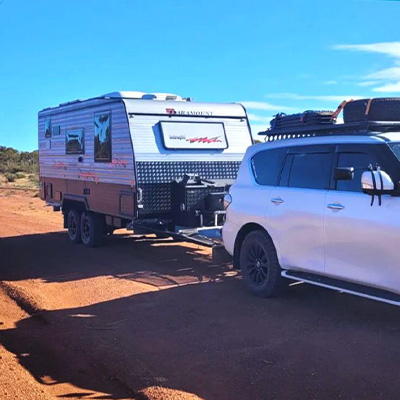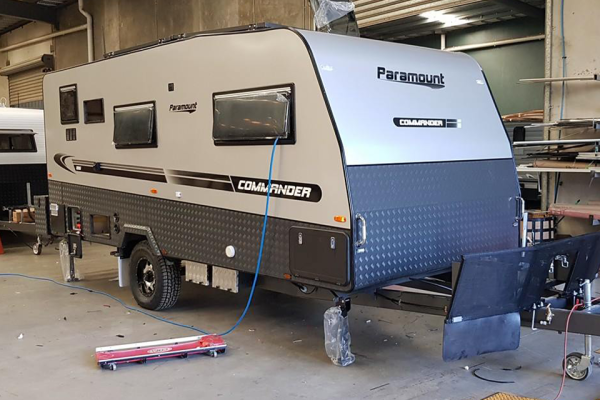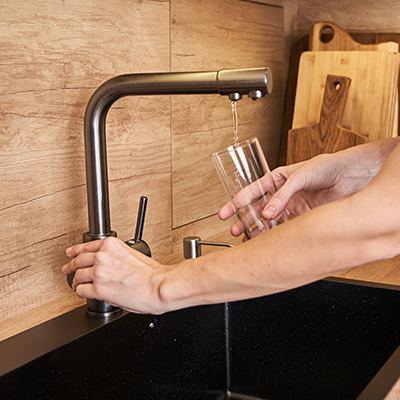
When setting out on your next adventure in the caravan, it is important to ensure any freshwater, greywater, or blackwater tanks are clean. Cleaning a freshwater tank is not as daunting as it sounds and is just a matter of emptying the existing water, cleaning and refilling. This simple cleaning process will ensure you have a good functioning water tank and access to water that is safe for drinking and showering. Due to the nature of the contents, cleaning a greywater and blackwater tank is a slightly different process which will be less intimidating if you follow our step-by-step instructions. In this article, we will explain the importance of a clean water tank, the types of water tanks, why they need to be cleaned, and how often. With our step-by-step guide, cleaning your water tanks will be a breeze.
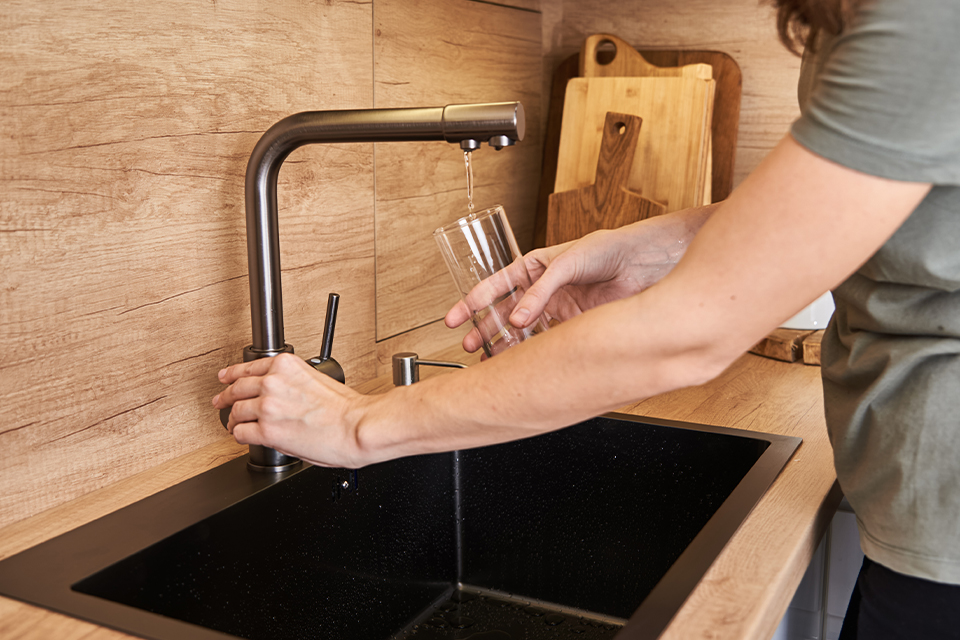
What Is a Caravan Water Tank?
All caravans have some kind of freshwater tank which stores clean water for drinking, sinks and showers. These water tanks are usually made from polyethylene plastic, galvanised steel, or PVC and nylon. Most caravan water tanks range from 60 to 90 litres in size. Apart from freshwater tanks, there are also greywater and blackwater tanks, each with their own purpose. Freshwater tanks and greywater tanks are the most common, while a caravan will have a blackwater tank if it has a toilet.
- Fresh water tank. A freshwater tank holds clean water, which is transferred via water pumps through a tap to sinks, the shower and the toilet.
- Greywater tank. A greywater tank collects the dirty water after it has been used in sinks and showers.
- Blackwater tank. A blackwater tank collects and contains human waste from the toilet.
Why Would You Clean A Caravan Water Tank?
It is important to clean the freshwater, greywater and blackwater tanks for the health and safety of the travellers and the longevity of the tanks. Cleaning a freshwater tank will ensure the water is safe for consumption and avoid any unpleasant odours and tastes. Sometimes a freshwater tank is your only access to clean water for drinking, showers and sinks, so a reliable, hygienic water system is imperative. Water sitting dormant can become contaminated with bacteria, biofilm, fungi, and viruses. Not only can these organic materials harm your health, but they can make the water taste bad and create an unpleasant smell.
Greywater and blackwater tanks store waste products that need a regular deep cleaning to avoid nasty odours and pipe blockages. The tank sensors work better when the tank is clean, so you will get more accurate readings regarding the contents and fullness of your tank.
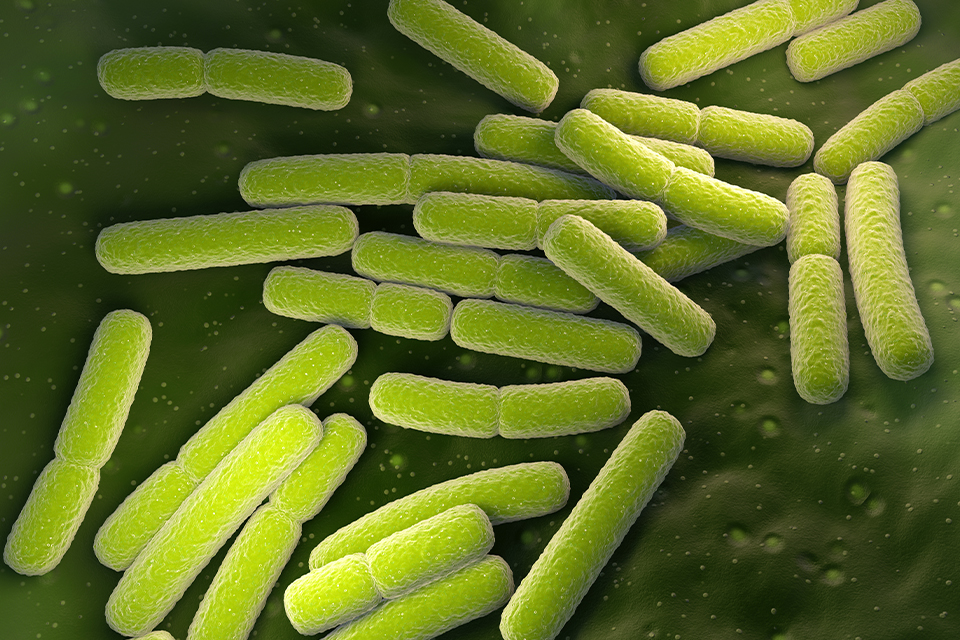
As the greywater tank collects all the wastewater from sinks and showers, it is important to clean it on a regular basis to avoid buildup leading to clogging or dreadful smells. Grey water does not stay grey. It will turn black within a day or so, depending on the humidity. The water becomes bacteria-ridden and unsanitary.
With a blackwater tank, you are basically carrying a toilet on the road, so cleaning is essential. The blackwater tank stores potentially hazardous toilet waste, so the tank needs to be cleaned regularly and the waste emptied in approved dumping stations to avoid contaminants.
How to Clean A Freshwater Tank
Follow these nine simple steps to make cleaning your caravan’s freshwater tank easier.
- Drain the tank. The freshwater tank is easier to drain than a grey or blackwater tank which needs to be hooked up to a sewer to dispose of the waste. Although there is no waste from a freshwater tank, it is still important to consider your surroundings, the environment and other people nearby. Before draining the tank, turn off the water heater and water pump, drain the taps, and then locate and open the drain valve to empty out the water. There is no need to connect a hose to drain the water as you would with a black or grey tank. To ensure a smooth water flow, release the drain valve slowly.
- Clean the inside of the tank. To remove any residual dirt or debris, hose the nooks and crannies of the tank. This is not essential but is a good idea if the tank hasn’t been cleaned for a long time.
- Add a cleaning agent. When adding a cleaning agent, it will need to be mixed with water and poured into the tank using a hose, funnel, or watering can. There are several different types of cleaning solutions available, from commercial cleaning agents like Tank Clean to natural products like vinegar and bicarb soda. Milton baby bottle solution can also be used to sterilise water tanks. Another option for disinfecting water is chlorine dioxide which can be purchased in tablet form and is recommended as a safe and effective product. If you prefer a more natural solution, vinegar and bicarb soda can be added to a few litres of fresh water and then poured into the water tank for cleaning. While this is the least effective cleaning and sterilising agent, it can kill about 80 percent of germs. Some people even recommend red cordial to clean the tank. Simply fill the tank with red cordial, leave for 30 minutes and then rinse out.
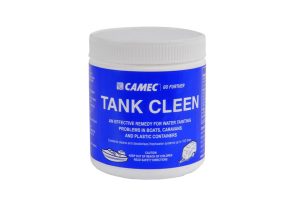
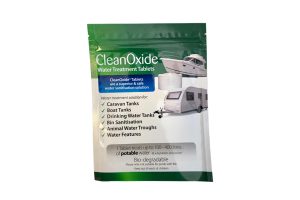
- Refill the water tank. Fill the water tank back up with water to make sure it mixes with the cleaning agent. This will ensure that the solution can clean as much of the tank and its surface area as possible.
- Turn on the taps until the water just starts running. By running the taps for a small moment and then turning them off again, you are ensuring any nasty residual water still sitting in the pipes is flushed away.
- Let it sit for a while. While there is no specific time the cleaning agent needs to sit, the longer it stays in the tank, the more likely it will be to remove any bacteria and microorganisms. Most people recommend leaving it in the tank for 24 hours. At this stage, you could take the caravan out for a drive to give the cleaning solution and water a chance to mix together and get into all the crevices.
- Flush the tank and pipes out again. Once the cleaning agent has had a chance to work, it is time to flush the tank out again. By this stage, the tank should be clean and disinfected, but it is important to empty this water out for optimum benefits. Emptying the tank again will eliminate any chlorine taste and wash away any leftover residue. Follow the same procedure as step 1 and release the water drain valve slowly, remaining conscious of the environment and people around you.
- Refill with fresh water. Refill the tank with fresh water but be conscious about the type of water hose you use. Never use an ordinary garden hose, as they can leach contaminants back into the water. Use a hose designed specifically for drinking water. Alternatively, you can also invest in an inline water filter which is an external water filter that attaches to the hose and filters the water as it flows into the tank. Once the water tank has been filled with fresh water, close the drain valve and turn the water back on.
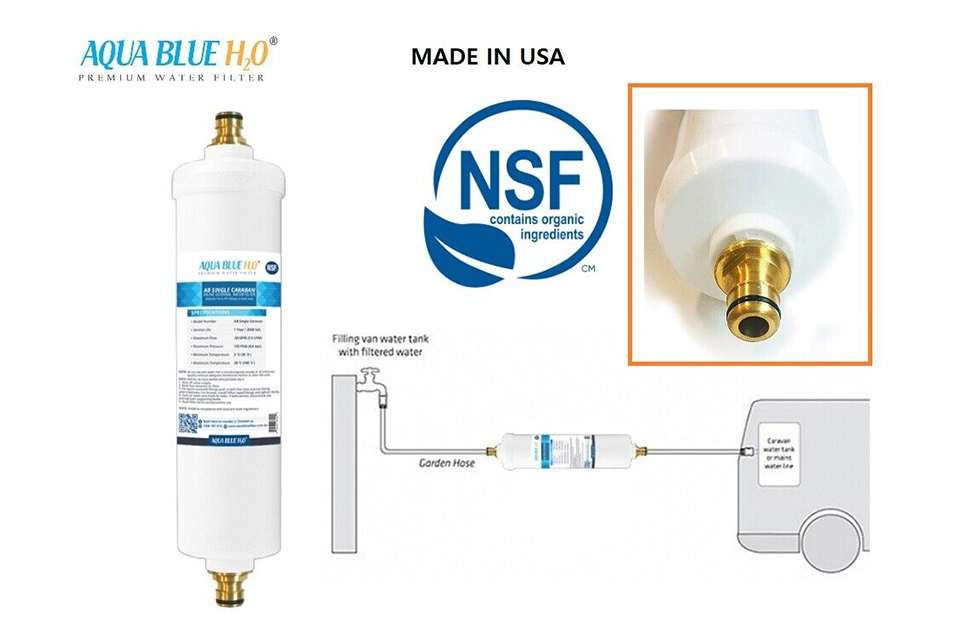
- Test the water quality. Now that your tank has been cleaned, sanitised and refilled, test the water quality to make sure there are no leftover contaminants. You can do this with a water testing kit or by sending a water sample off for analysis.
How Often Should You Clean A Freshwater Caravan Water Tank?
How often a freshwater tank needs to be cleaned depends on the amount the caravan is used and if there is any unpleasant odour coming from the tank indicating a water problem. As a general rule, caravan water tanks should be cleaned at least every six months, particularly if you are out on the road full-time. More regular, three monthly cleans are recommended if the caravan is only used sporadically, as stagnant water can foster mould and algae buildup. It is also advisable for caravan water tanks to be cleaned when returning from a big trip.
Apart from these suggestions for regular maintenance, your caravan water tank will need a clean if there is a bad taste or smell in the water. This can be caused by a number of factors, including water tanks being left in the hot sun, using the wrong hose to fill the tank, and even leaving water in the tank for a prolonged period of time. Regardless of how often you clean your water tank, it must be done thoroughly each time to remove the presence of bad bacteria, minimise the risk of illness, and prevent issues with the water tank and system.
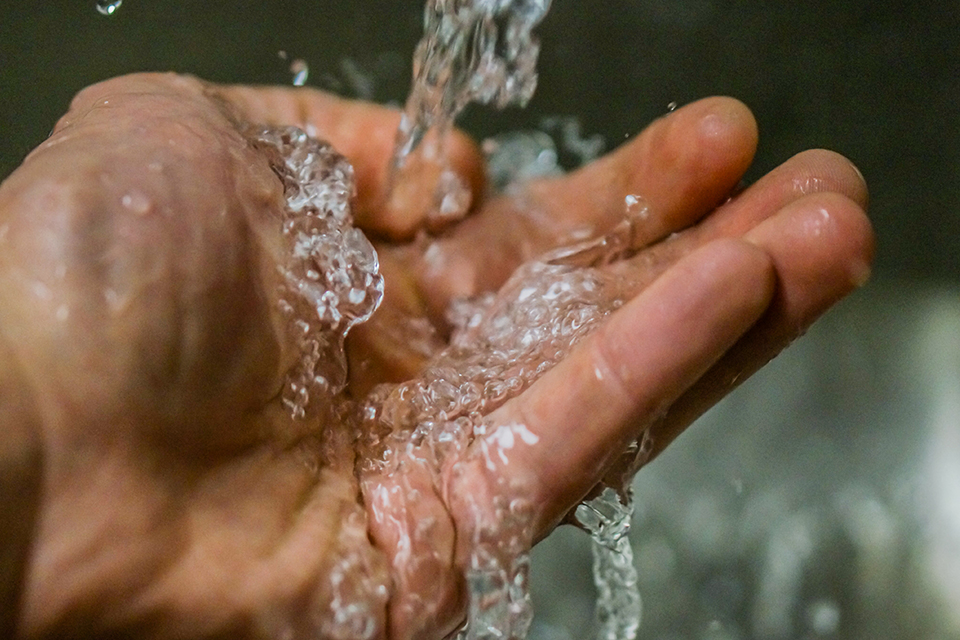
Should You Leave Fresh Water in Your Caravan Tank?
It doesn’t matter if you leave fresh water in your caravan tank, as bacteria can grow whether your tanks are full, partially filled or empty. The most important thing is to keep it consistently clean when you use it and make sure you do a thorough tank clean prior to a trip, particularly if it has been sitting around for a while.
Emptying a tank is not a guarantee that no bacteria will grow, as there is often a small pool of water left in the bottom of the tank or, at the very least, condensation on the roof and walls. To try and get a tank completely dry, you will need to leave it in hot weather for a few days.
Tips to Keep Tank Water Fresh
Having clean drinking water in your caravan will make life on the road much more enjoyable.
Here are some tips for keeping water from your caravan tank fresh.
- When out on the road, collect the water from a good source. You can find water sources at petrol stations, parks, water filling stations, and visitor information centres, to name a few.
- Make sure you use a hose specifically designed for drinking water.
- Invest in an inline filter.
- Clean the tank regularly.
How to Clean a Greywater Tank
Here are some common-sense steps to help you clean your caravan’s greywater tank. Unlike the freshwater tank, the greywater tank does not need to be refilled. However, it does require an approved dumping area.
- Empty the water tank. Ensure you are parked in a designated dumping station area, as you can only empty grey waste in specified areas. Locate the grey water tank valve and attach the hose. Turn the valve to open, allowing the grey water to flow from the tank into the hose and designated dumping area.
- Add a cleaning product and fresh water. You can add commercial cleaning products or soapy water down the sink or shower drain into the caravan greywater tank. The ultimate goal is to rinse out any debris left in the tank. Alternatively, you can pour the mix directly into the greywater tank. Most people recommend dishwashing liquid as a cleaning solution.
- Leave the mixture for 24 hours. Although not essential, you can leave the mixture in for a period of time to give it time to process. Another option is to go for a drive so the mixture has a chance to loosen up any debris in the tank.
- Rinse out the greywater tank. Once again, after finding a designated dumping area, apply the hose and rinse out the water mixture.
- Repeat if necessary. If the water is not running clear, you can refill the tank and dump it several times.
How Often Should You Clean A Greywater Caravan Water Tank?
It is important to clean your greywater tank on a regular basis to avoid unpleasant smells and clogged pipes that might cause the water to back up. The general consensus is that every two weeks and at the end of each trip is the perfect regular time to clean the caravan greywater tank. Other signs it might also be time to clean the greywater tank are sinks or showers failing to drain or backing up, the greywater tank sensor showing ‘full’, or unpleasant odours from the sink or shower drain.
Tips For Looking After a Greywater Tank
Greywater tanks are responsible for holding water from dishes, washing machines, sink use and showers, so looking after the tank is essential. These tips might help keep your greywater tank clean and better for the environment.
- Clean the greywater system regularly.
- Flush greywater hoses after every use.
- Pour vinegar, baking soda or eucalyptus down the drains to clean them.
- Use commercial greywater tank cleaners.
- Don’t use the caravan shower as a toilet.
- Wipe any excess food off plates and utensils before washing them.
How to Clean a Blackwater Tank
Cleaning and emptying a blackwater tank may not seem like the most pleasant job, but it is necessary and easy to do if you follow some clear instructions.
- Use protective gear. Before you even contemplate emptying the tank, ensure you are protected with clothing like hand gloves, shoe covers and even eye protection.
- Find a dumping station. Locate a blackwater tank dump station, as blackwater waste needs to be disposed of in approved, designated areas. You can find these dumping stations in most commercial camping grounds and most national and state parks.
- Locate the blackwater tank valve. The blackwater tank valve is usually located near the greywater tank valve but is often larger. This valve is where you will hook up your sewer hose. Before you take the lid off, make sure both valves are closed securely.
- Hook up the sewer hose. Connect one end of the sewer hose to the blackwater tank valve and the other to the dumping station inlet.
- Drain the blackwater tank. Open the tank valve slowly to let the waste start moving into the hose. If the tank is full, there will probably be a good pressure surge. It is a good idea to monitor the hose to make sure there are no leaks. Allow the tank to drain completely, and then close the valve.
- Disconnect the sewer hose. Disconnect the hose and then put the cap back on the waste valve.
- Flush the toilet several times. By flushing the toilet, residue water will empty back into the tank so it can then be emptied again with mostly clean water. Empty again.
- Fill the tank with water and cleaner. Once the tank has been emptied a second time, refill it with water but add bleach, a liquid enzyme cleaner or ice cubes to dislodge any debris. Make sure the tank is filled three-quarters of the way. Then empty the tank again.
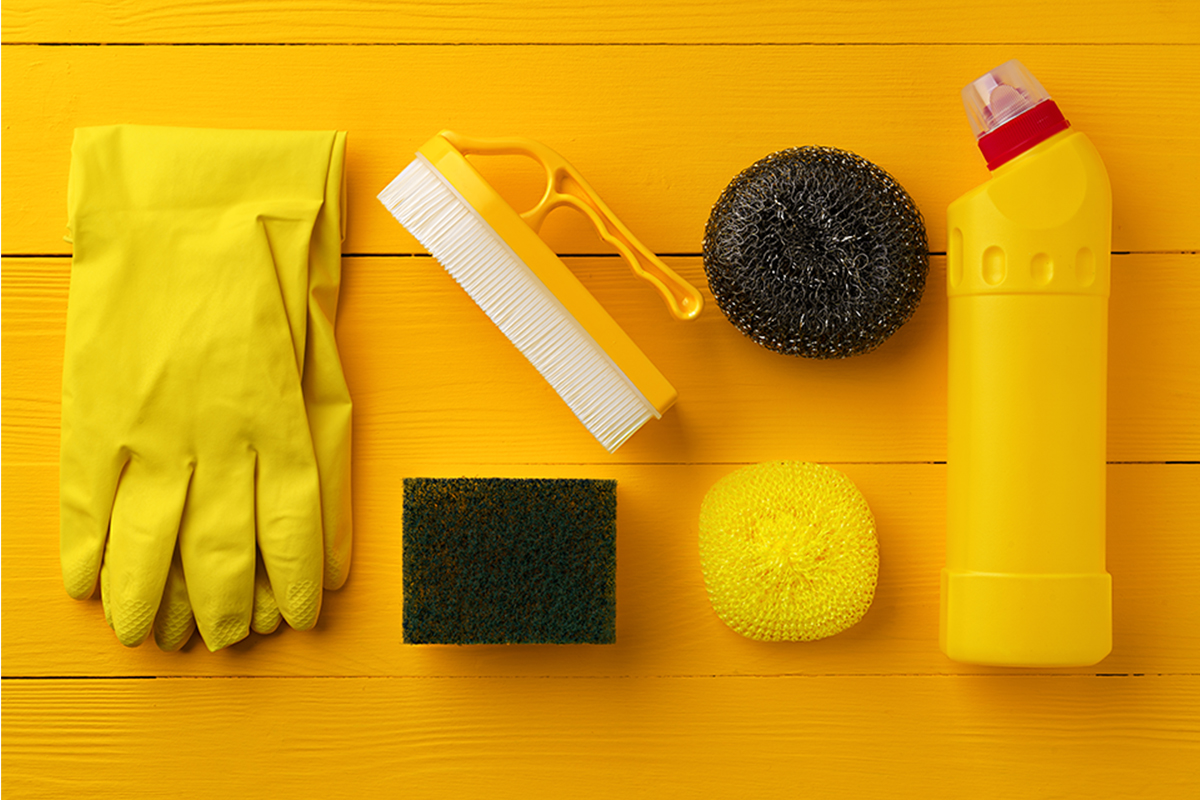
Caravans have water tanks that need to be cleaned on a regular basis. A freshwater tank may be your only source of water while travelling, so it is vital that one freshwater source is kept in prime condition. If you have greywater and blackwater tanks, their purpose is to store wastewater, so they must be kept clean and maintained properly to avoid becoming a breeding ground for germs and bacteria. In this article, we have explained how to clean freshwater, greywater and blackwater tanks in easy steps so you can enjoy life on the road. For more information on caravan water tanks and everything caravans, contact the friendly team at Paramount Caravans.
